
The ancient quarry at Apollonas
Close to the small village of Apóllonas, at the northern tip of Naxos, lies the island’s main antique marble quarry. It is located on a small hill to the southwest of the village that consists of very good, white, fine-grained marble from which many statues have been made. One of these statues lies unfinished in the quarry, the gigantic Kouros.

view from the quarry towards Apóllonas
On the top of the hill on its southern side lies an ancient inscription: “OROS XORIOU IEROU APOLLONOS” (= border of the sacred district of Apollo); the whole hill was obviously consecrated to Apollo, the god of the arts.

The ancient inscription is carved into this small marble cliff (in the lower right part).
The quarry of Apóllonas was probably in use as far back as the Mycenaean epoch, and marble was quarried here for many centuries. It may be the oldest marble quarry in Greece. Mineralogical research has revealed that numerous statues come from this quarry, not only those found on Naxos, but also in Delos, the Acropolis of Athens and even in Delphi. Certainly material from this quarry has been used for the temples on Naxos and Delos. Especially in the Archaic period large quantities of marble must have been mined here. The tyrant Lygdamis (from 538 BC) ensured that the quarry was nationalized; however, after that its importance soon diminished as, with the development of technology, the underground quarries in Paros and Pendelis near Athens could be exploited more effectively, whose marble was finer and thus more suitable for sculpturing.
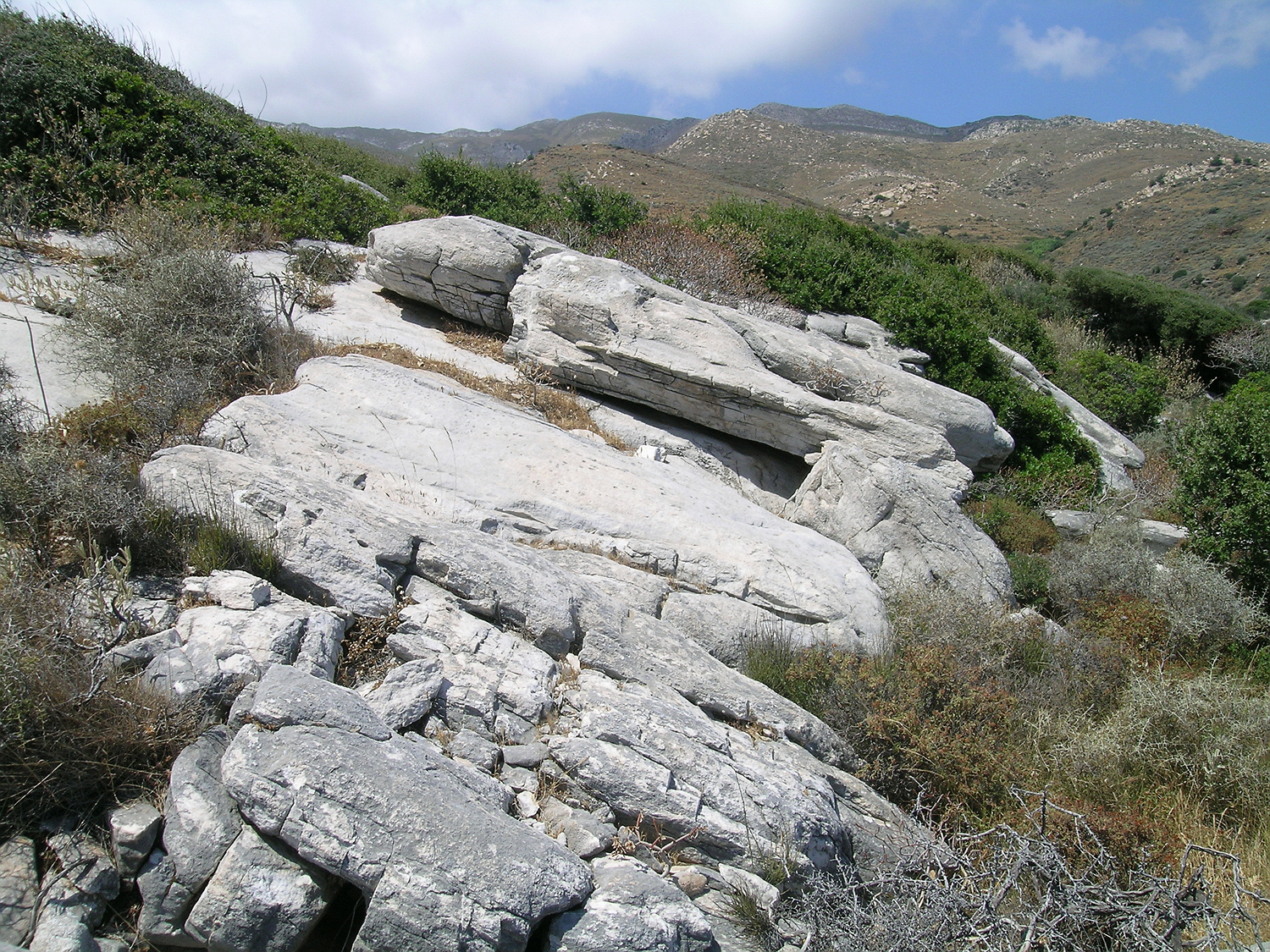
The whole hill is covered with big boulders of good quality marble.
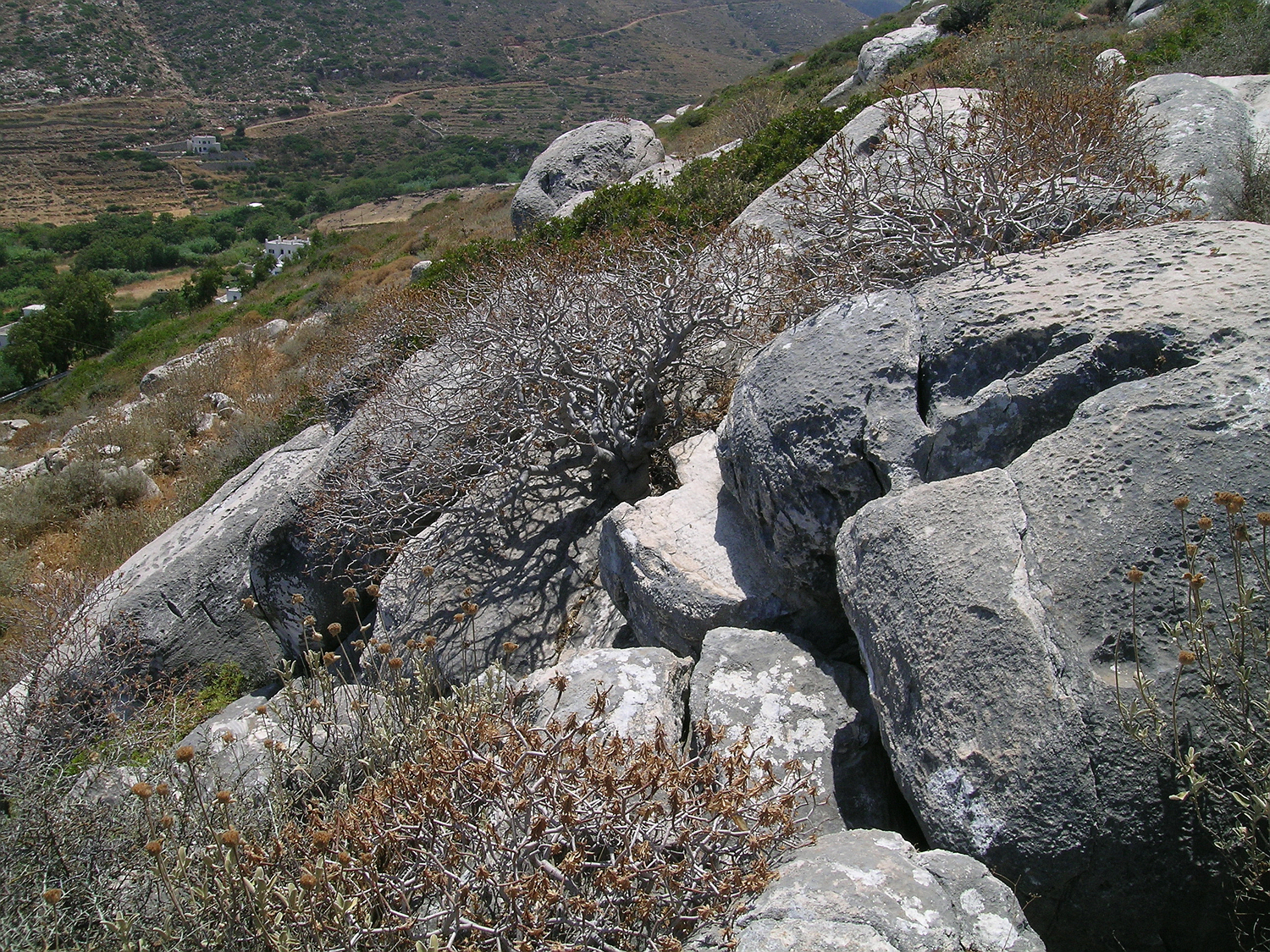
Between the marble rocks dwarf shrubs of various species grow, especially buckthorn, and the tree-spurge (Euphorbia dendroides), which seems all dry in summer.
The hill is difficult to access due to the many prickly bushes and rocks that one has to climb over. However, if you take the trouble to explore it a bit, you can find many interesting traces of the ancient use.

The deep indentations on this stone are not natural; however, it is not clear for what purpose they were made.

Here a block has been removed for instance for a statue.

Here too an artificial notch is discernable: Probably a block for a statue was to be cut off. The round bulge on the right side looks like it was meant to be the head of the statue.
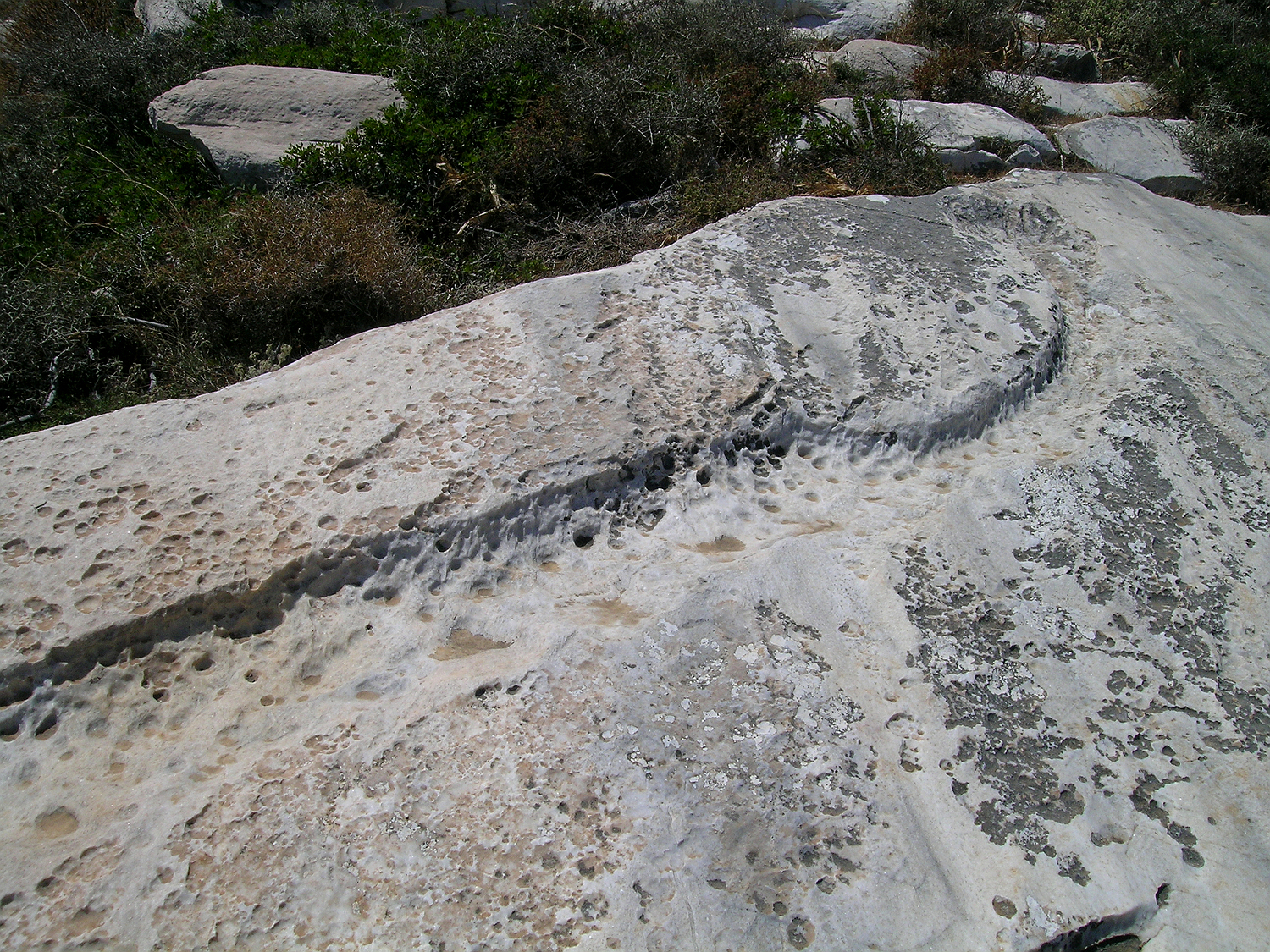
To remove the block, a deep groove was worked into the stone. However, the work was abandoned soon after its beginning.
Of particular interest is a rock just above the Kouros (to be reached unfortunately only by climbing over a fence and many thorny bushes). Here one can see clearly how the ancient masters removed larger blocks of marble.
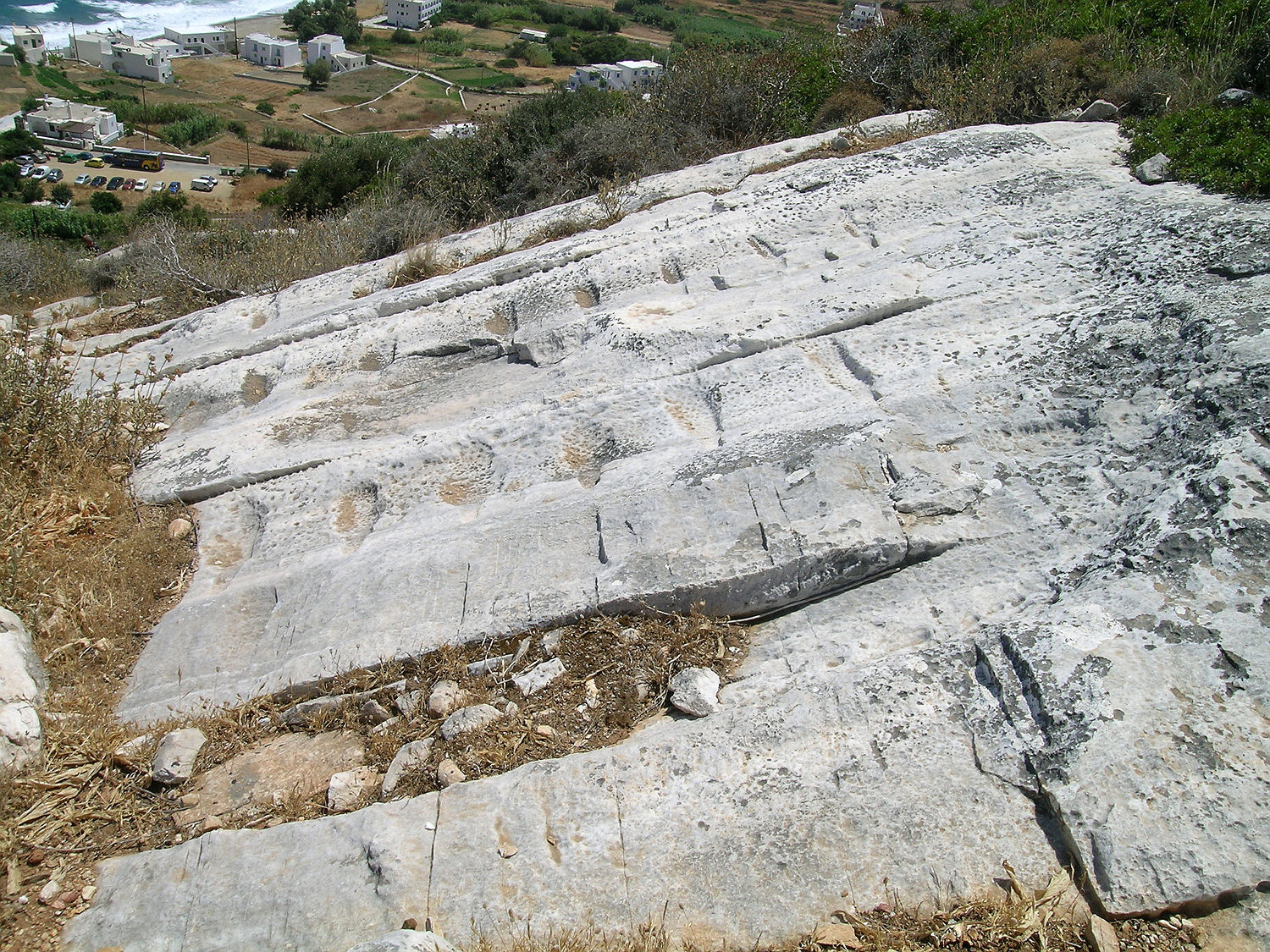
From this rock, the ancient builders removed several large marble blocks.
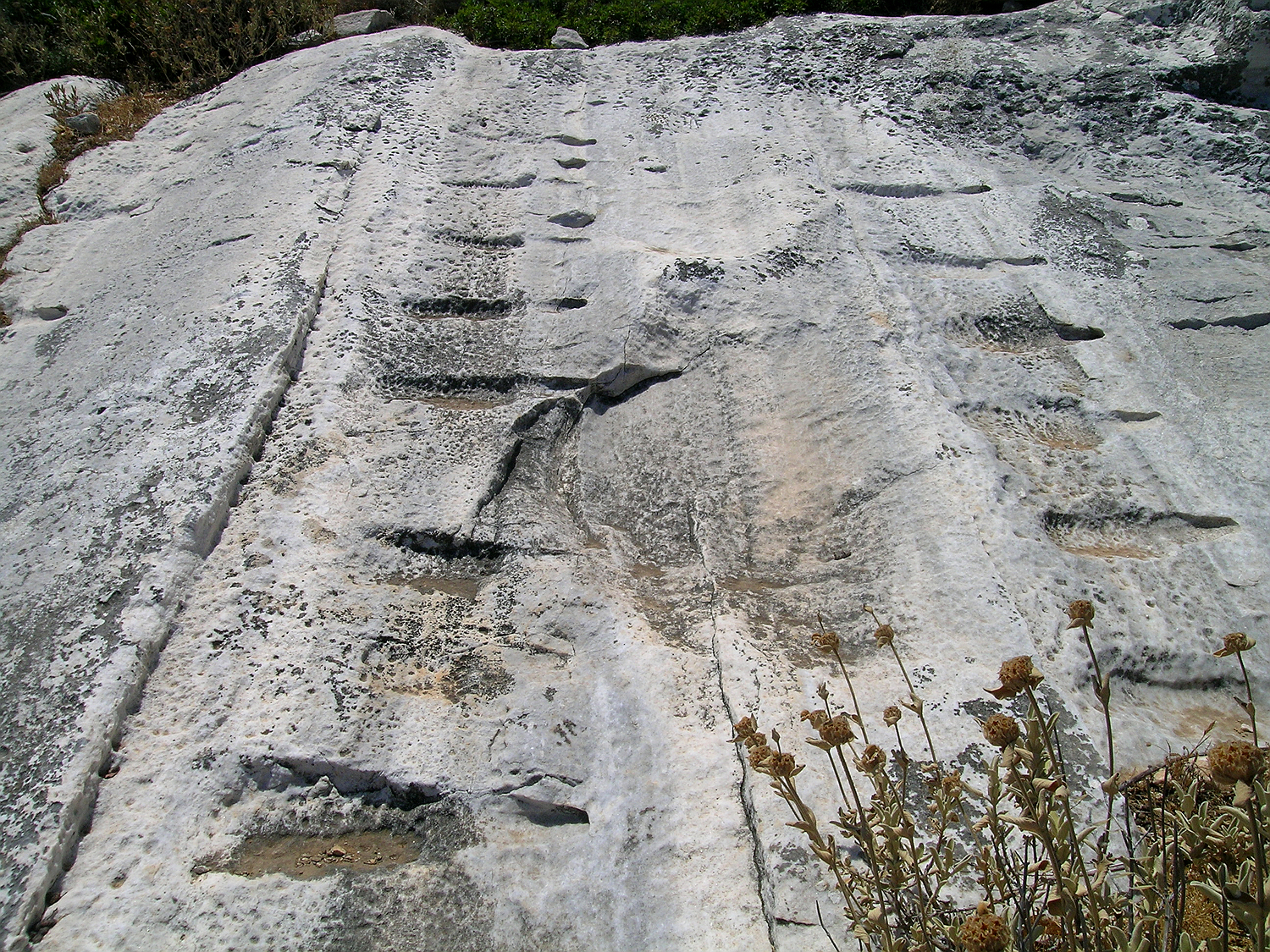
To remove a block, first a long line of deep, narrow holes were drilled in its “back” into the rock. Then from the front, that is the “free” side, at the lower edge wedges were driven into the marble until the block broke off as a whole.

Large marble blocks were removed one after the other (progressing from left to right in the picture). When one block was removed, for the next holes of the same depth were drilled in a row into the marble, probably with iron rods or drills, using emery powder as abrasive. Then, from the free side (in the picture from the left) wedges were driven into the marble block at its lower edge. For this purpose, small pits were first worked into the stone in front of the wedges so that you could hit them with a big hammer. By hitting the wedges one after the other in a slow rhythm, after a while the entire block splits off without damage.
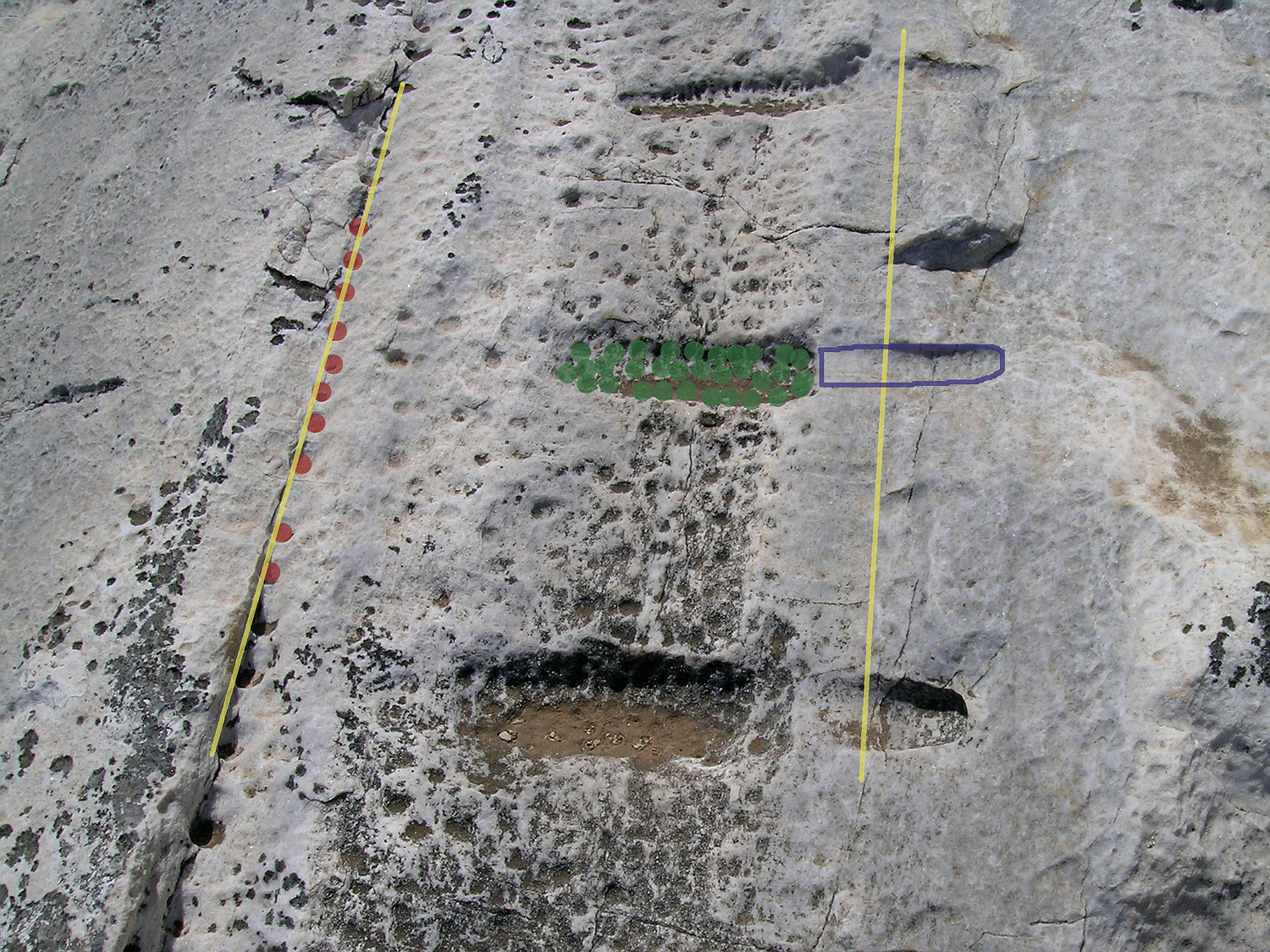
The yellow lines indicate the boundaries of the blocks, the red points indicate the drill holes (only recognizable at one border of the block), the position of the wedge is marked in blue and the depression required for hitting the wedge with green points (holes and wedges belong to different blocks).
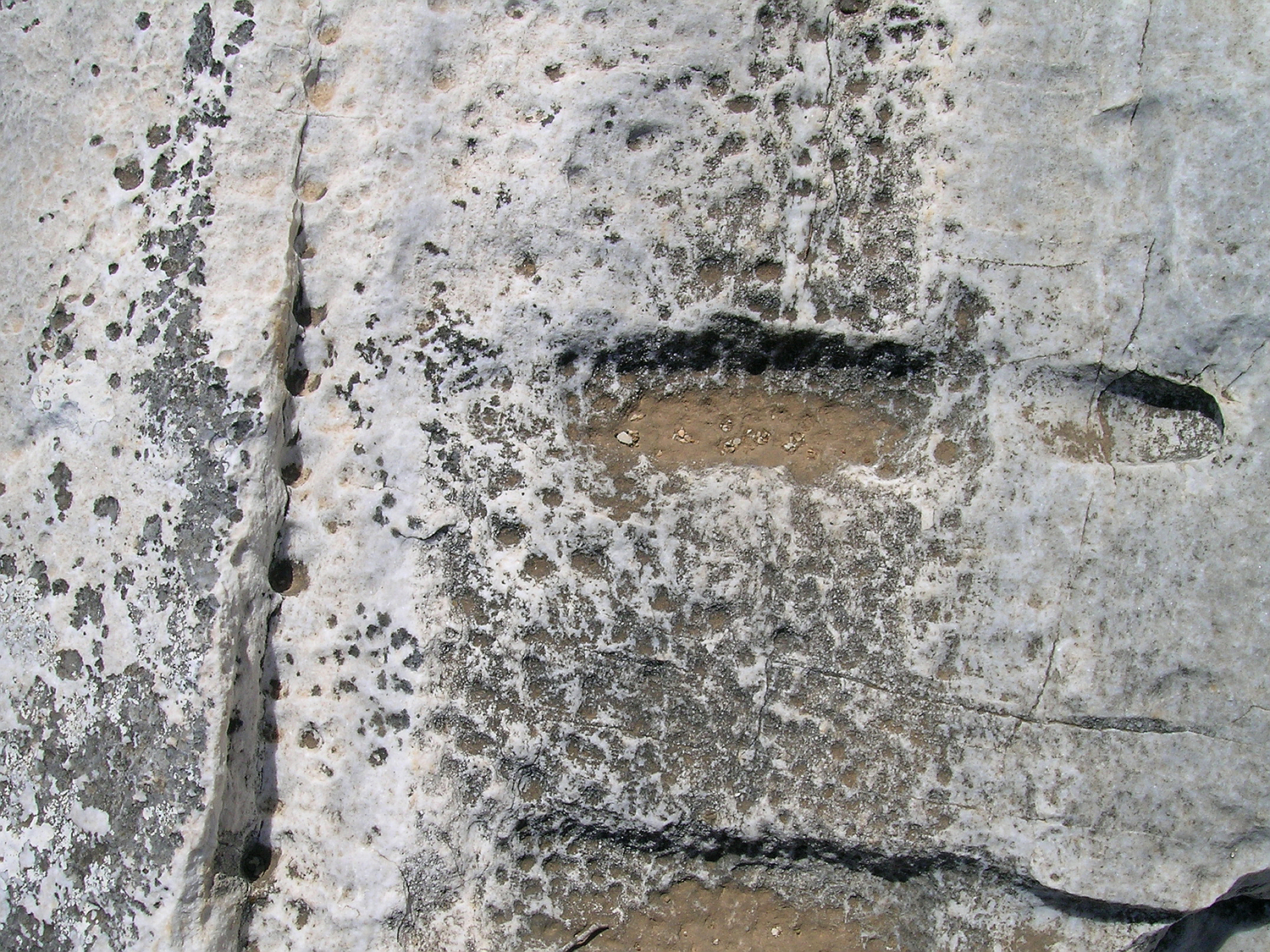
On the left the row with the drilled holes, in the middle the depression needed to hit the wedge, on the right the place where the wedge was sitting.

On the same rock you can see an edge at the front, which was created when a block was taken away.

and another beautiful white marble rock
continue: The ancient inscription at the quarry at Apollonas
back: Quarries and statues
see also: